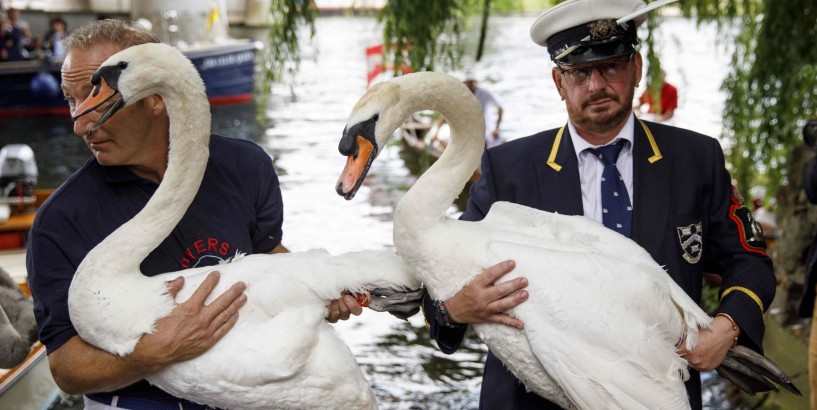“All up!” The cry signals that a swan has been spotted. At once all six boats move in on their target in a circle. As they draw tight enough to block any escape route, a crew member lunges forward and plucks the swan from the water.Such a sight can only mean that the Royal Swan Upping is under way. The annual tradition sees a fleet of boats make its way up the River Thames from Sunbury in London to Abingdon Bridge in Oxfordshire counting the swans along the way. As with seemingly all traditions of Britain’s royal family , the practice has been going on for hundreds of years. It is not known for certain when the crown first laid claim to the swans but the earliest reference to ownership was noted in 1186, a few years before Richard the Lionheart joined the Crusades. From extras.Contrary to popular belief, however, the Queen does not own every swan in the country; she only reserves the right to claim ownership over those which are not already accounted for. So the count is also undertaken on behalf of two ancient companies who, together with the Queen, own all of the swans on the Thames.Back in the early years of the tradition, the Swan Upping was a hunt and the birds were only counted to ensure that too many weren’t taken for slaughter. Those that were left alive would be marked so that each group knew which bird was theirs for taking the next year.Eating swans eventually fell out of favour with the crown – chicken and other fowl took over as staple foods and the swan became revered for its beauty. Still, the count goes on, though nowadays it is conducted with rather more respect for the birds. The different groups of counters no longer claim ownership by carving their insignia into the swan’s beaks, for instance.
© 2024, Copyrights gulftimes.com. All Rights Reserved









